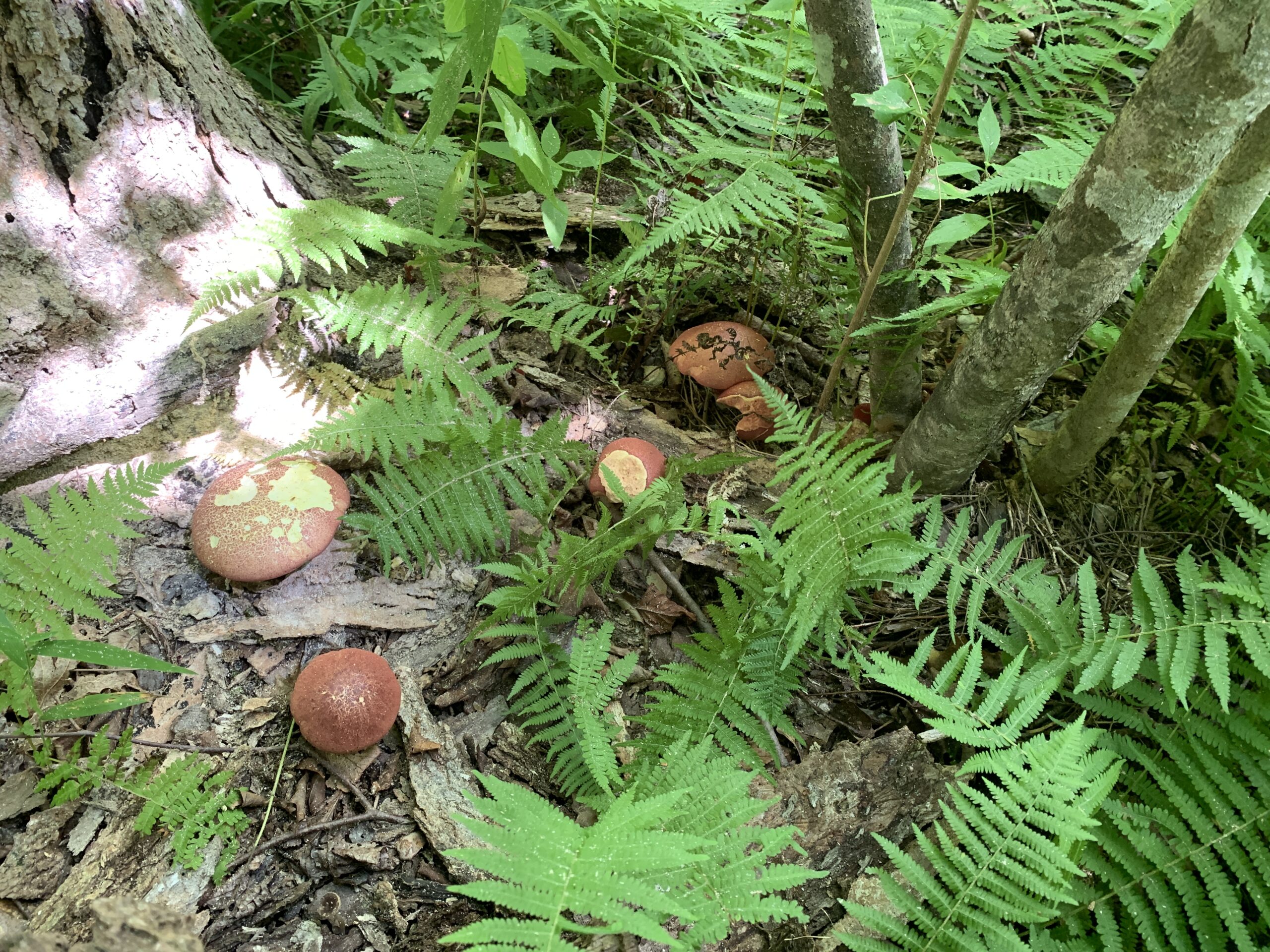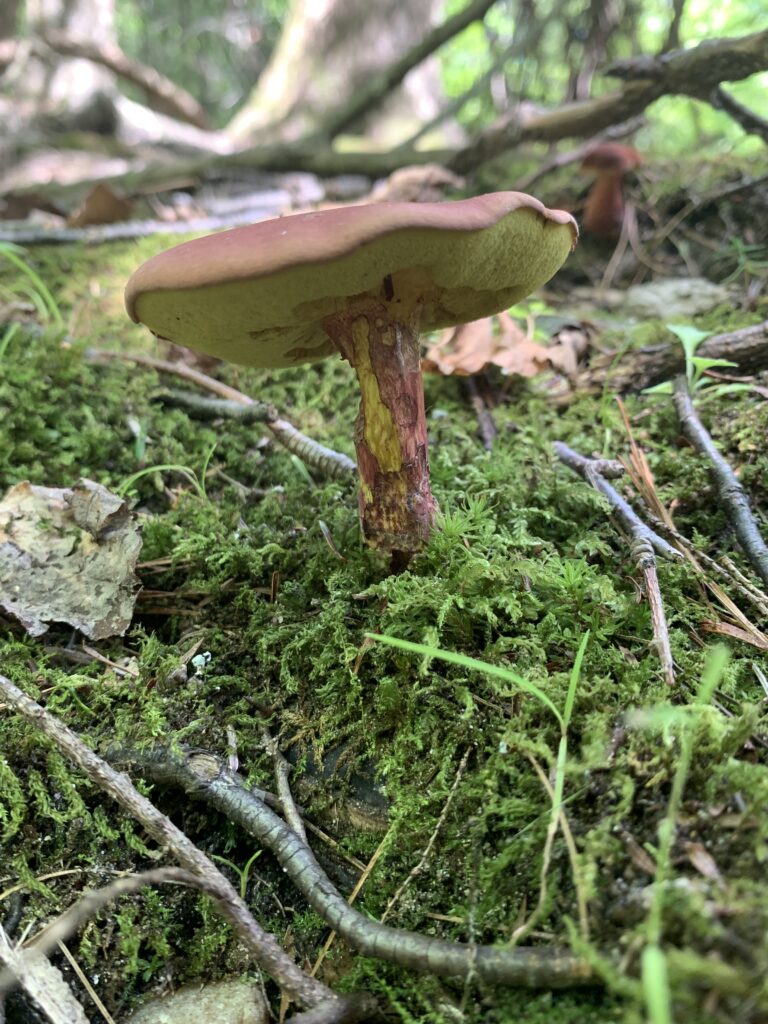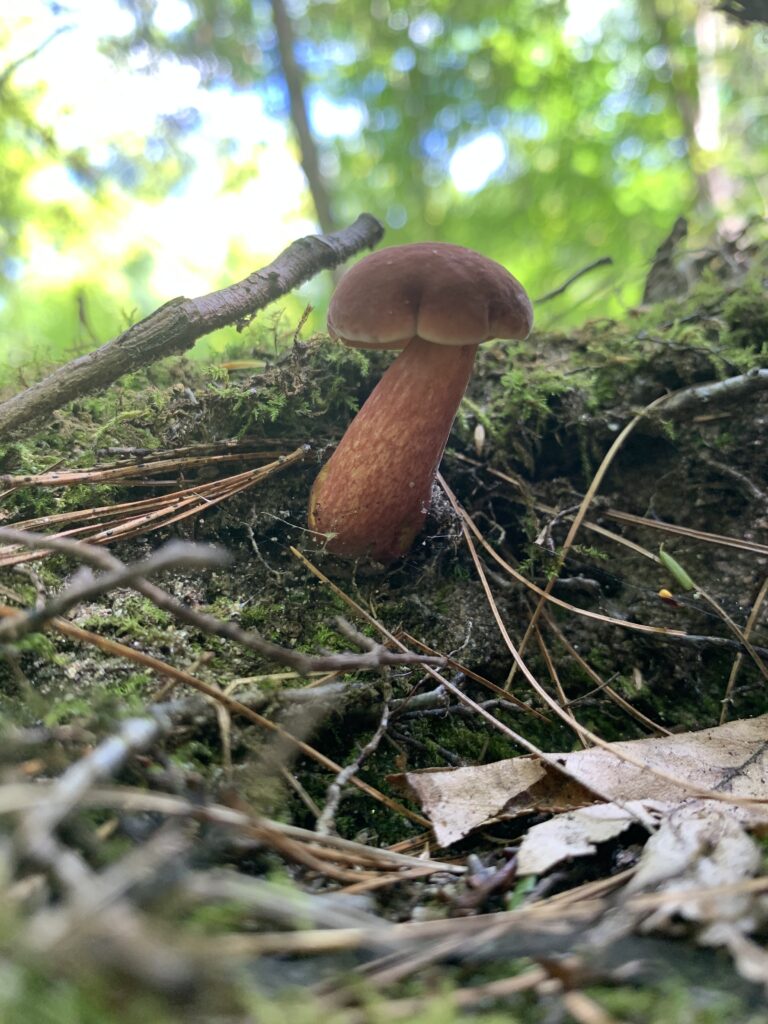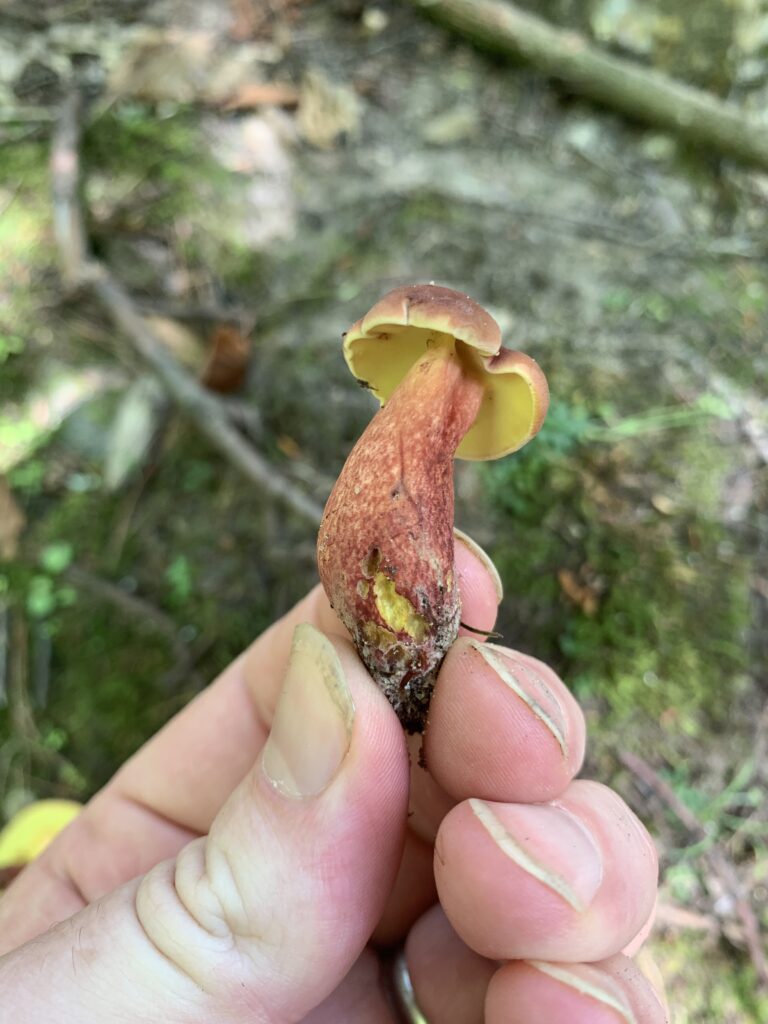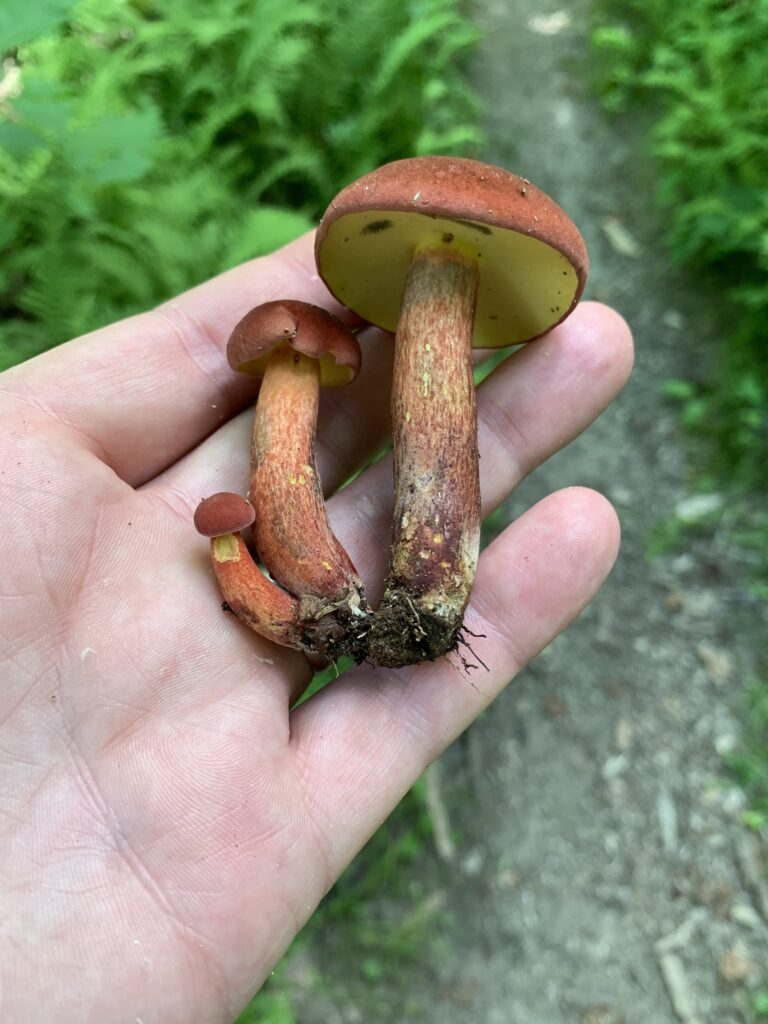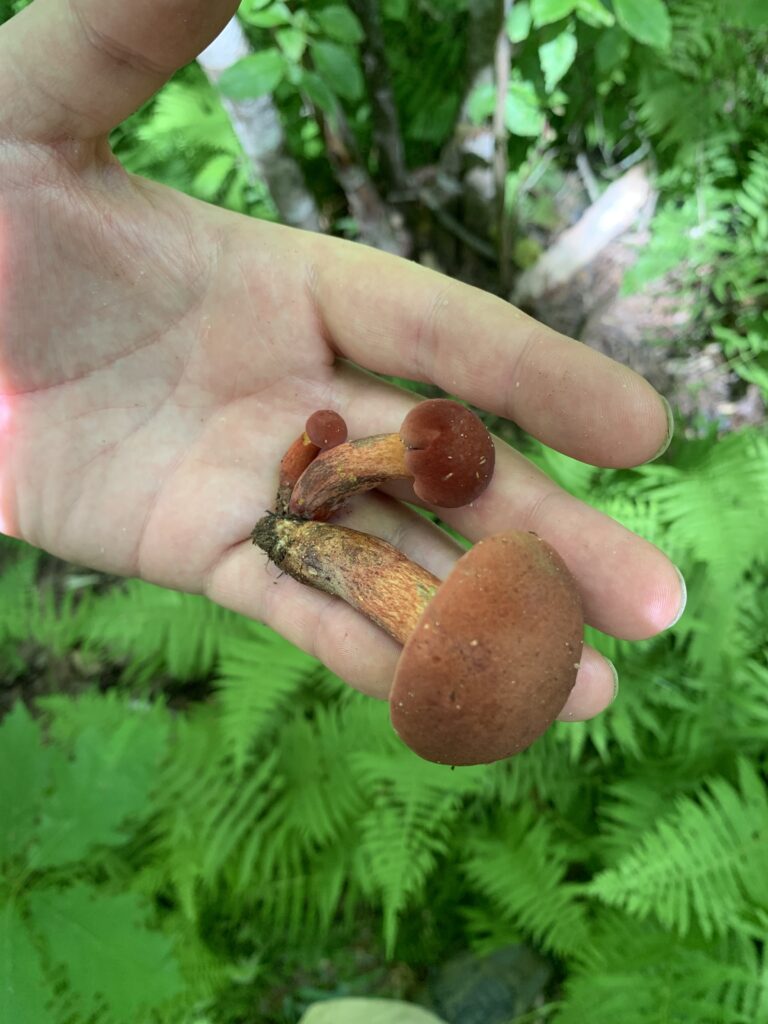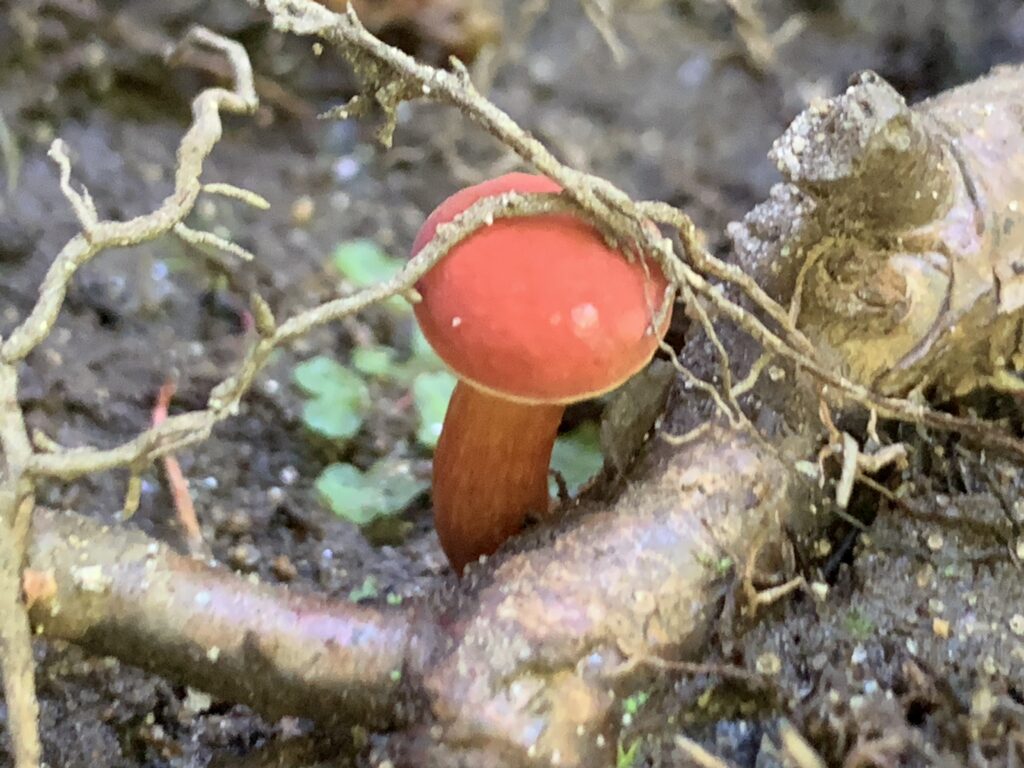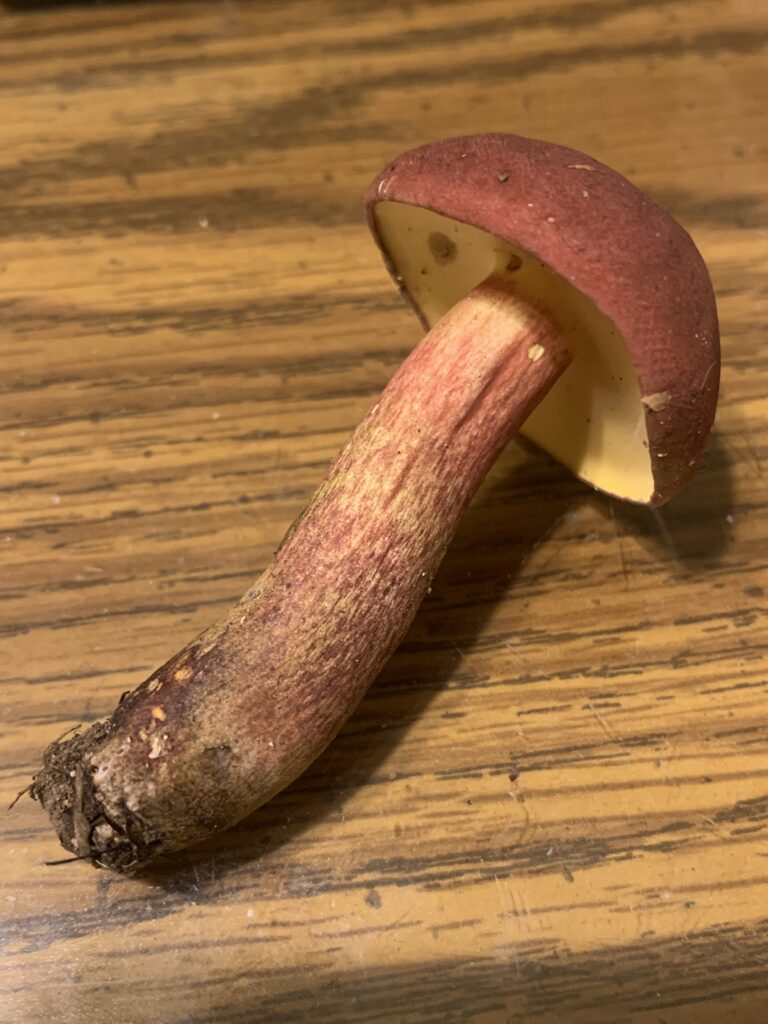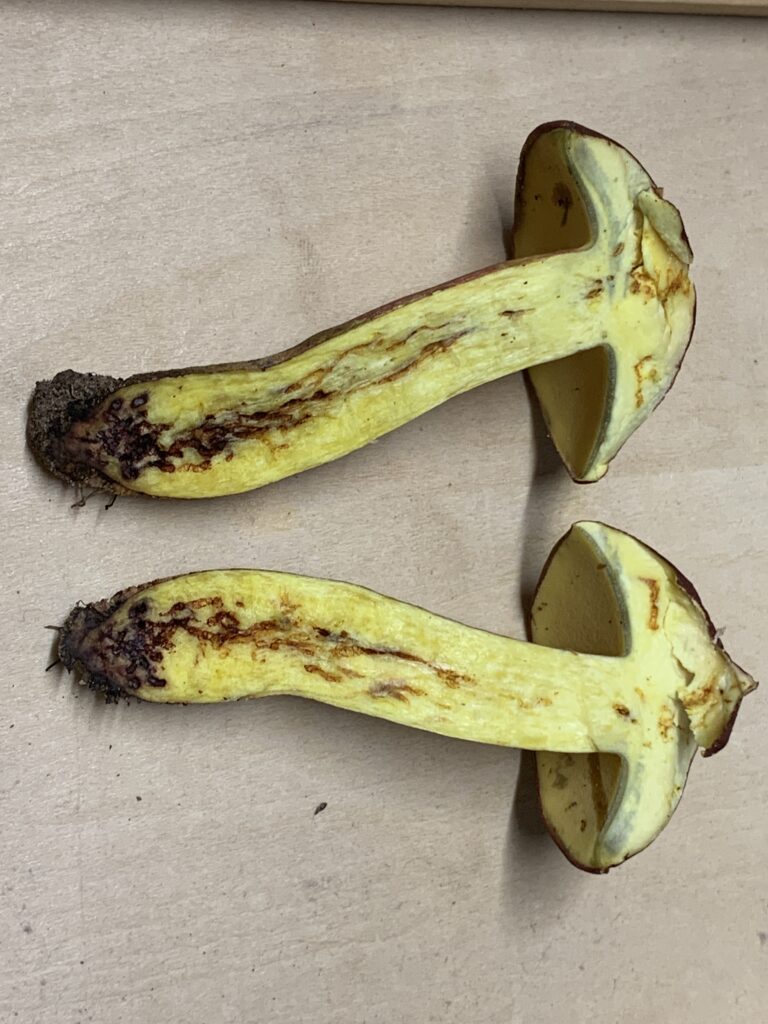| Ecology & Habitat | Mycorrhizal, Singly, or Clustered (arising from a common base) Deciduous forests, often near streams or wet areas |
| Edibility, Taste & Odor | Mild flavor, Edible |
| Cap | Red or Reddish surface, possibly cracked revealing light yellow flesh. Smooth and Dry |
| Pores | Pore surface bright yellow, bruising blue-green VERY SLOWLY. |
| Stem | Yellow and Red stem bruises very faintly blue-green if it bruises at all. Bruises VERY SLOWLY. Smooth, but may have very mild reticulation at the top, or spotting near the bottom. The spotting is mostly and illusion from the red surface giving way to the yellow flesh beneath. |
| Spores | Olive Brown to Brown |
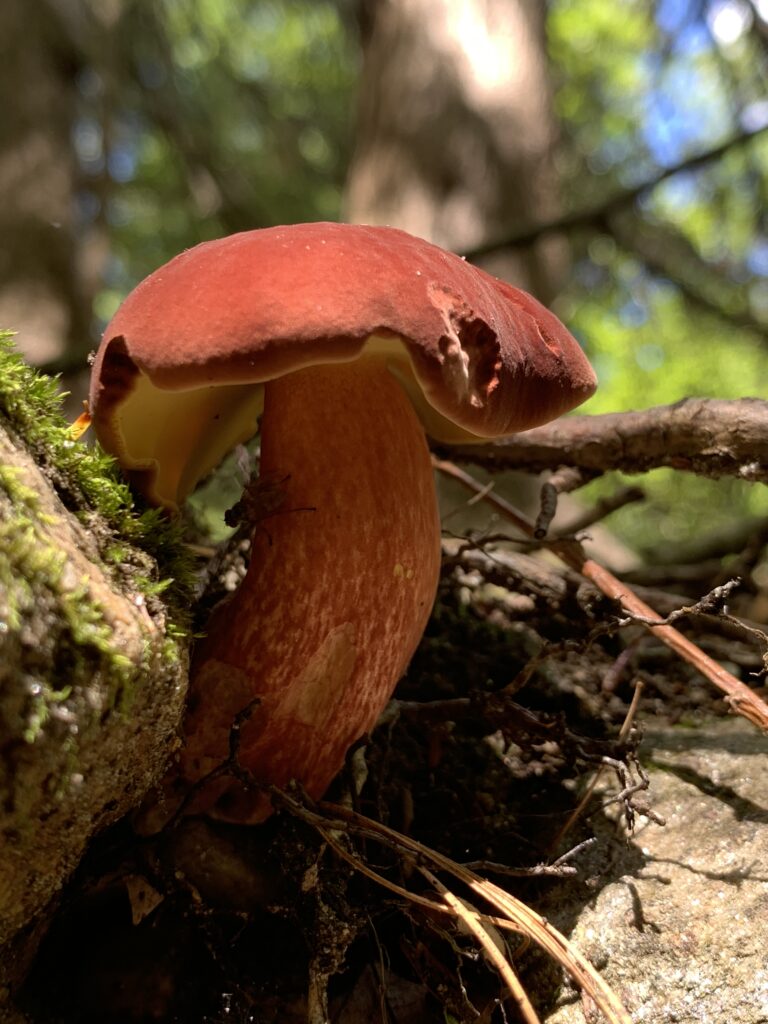
The two most important things to know when you’re looking at bicolor boletes for the dinner table is…
- They DO NOT bruise QUICKLY. Instead, they bruise VERY SLOWLY. If they bruise at all.
- They DO NOT taste BITTER. They will instead be very MILD.
The reason it’s important to focus on those two features, is because there are toxic look-alikes that look VERY VERY similar to the bicolor bolete. And those two features will help steer you clear of those dangerous ones. However, just because you’ve ruled out those two details, doesn’t mean you’ve found a bicolor bolete. It just means you probably aren’t about to make yourself sick. Boletes can be very tricky to identify though. I didn’t start looking at boletes until a few years after I started learning, simply because there are so many, and many of them look very similar. Because of these annoying look-alikes, and the very very mild flavor. I don’t usually get too excited when I come across a red and yellow bolete in the wild. But, Many people do enjoy them, they’re just a bit too mild for my tastes.
Now for the description. The cap will be Red, or Reddish, Dry and Smooth. The ones in these photos are getting older and are showing some cracking. The inner flesh of the cap will be yellow, but often slightly lighter yellow than the yellow flesh of the stem. The pore surface will be yellow or gold, with very small pores. The pore surface will also bruise blue slowly. very slowly. The stem surface is often times both red and yellow. It will be yellow at the top of the stem where it meets the cap. But, just below that, it will be red, and the remaining portion of the stem will be red. The stem will also bruise faintly blue, very slowly. The inner flesh of the stem and the cap is yellow. So, the cracking cap, and the red of the stem as it ages will spread out revealing the yellow flesh beneath. There may also be a small amount of reticulation or netted appearance near the top of the stem, but it will be very faint if present at all. The stem may also appear to be very faint dotted as the red surface gives way to the flesh beneath during growth. The base of the stem will be bulbous when young, but will eventually become fairly even and straight throughout the length of the stem. The stem flesh, again, will be yellow, and probably slightly deeper yellow than the cap flesh. The difference in lightness is more apparent as it gets older. The reds and yellows are very bright when young, but fade as the mushroom ages.
